White Margin Sedge ID and Control
White Margin Sedge ID and Control
By: Tommy Butts, Extension Weed Scientist
Harvest is rapidly approaching, and the majority of folks have put weed control thoughts behind them. However, identifying and assessing late season weed escapes is a necessity to develop an effective weed control strategy for the next year. Sedges have really exploded over the past couple of seasons and identifying specific sedge species escapes in the fall can lead to much improved control the next growing season. Specifically, a relatively new problematic sedge, white margin or white-edge sedge (Cyperus flavicomus), has really burst onto the scene in several areas of the state. It has become extremely problematic in areas where it may have been misidentified early and improper herbicide selection led to a lack of control, and in severe cases, complete fields of rice being taken down (Figure 1). Several on-farm and greenhouse research trials were conducted in 2020 to find key identification characteristics and effective control methods of white margin sedge.
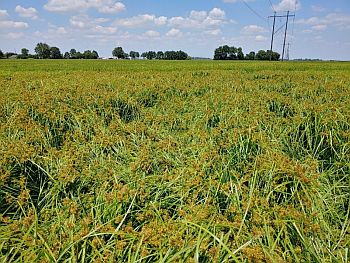
White margin sedge is an annual sedge species with no rhizomes or nutlets. It is difficult to distinguish apart from rice flatsedge early after emergence. However, when crushed, white margin sedge does not have the characteristic pine needle smell that rice flatsedge has. White margin sedge also appears to be a slightly later emerging species, commonly beginning emergence in mid to late May. Young white margin sedge plants have a light-yellow appearance, and the roots are typically a deep red color (Figure 2). Once bigger (> 6 inches), the undersides of leaves begin turning extremely white while keeping a green midvein (Figure 3); the tops of some leaves may also turn a silver-white color. The base of the sedge plant has an extremely waterlogged, fleshy feeling. Finally, the seedhead appears almost as if a yellow nutsedge and rice flatsedge seedhead were crossed (Figure 4).
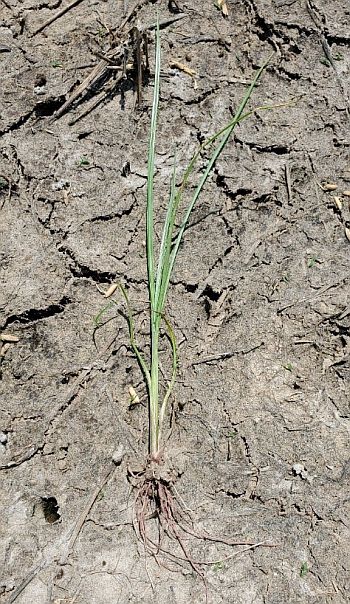
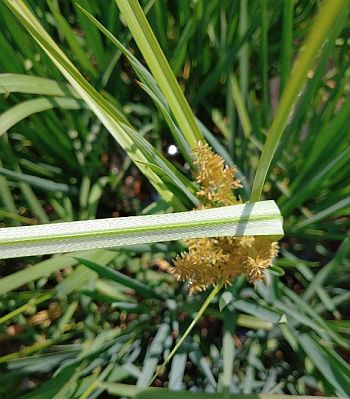
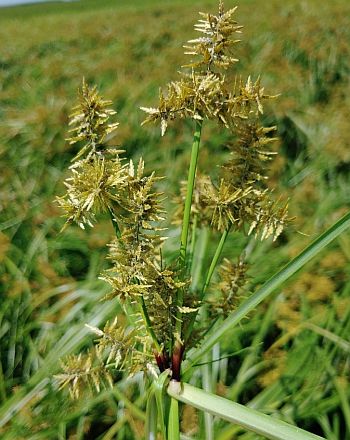
The first on-farm demonstration study conducted near Light, AR evaluated burndown herbicide options to control white margin sedge (Figure 5). Sedge plants were sprayed at 2 inches tall. Roundup (32 fl oz/acre) and paraquat (64 fl oz/acre) were the best burndown treatments to control white margin sedge providing >95% control. Sharpen (3 fl oz/acre) and 2,4-D (2 pt/acre) were the next best treatments and controlled white margin sedge 80% and 65%, respectively.
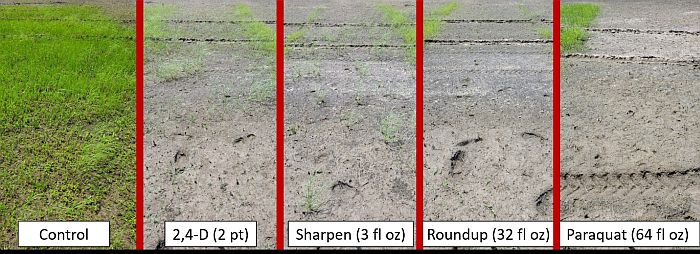
An on-farm preemergence (PRE) study was conducted near Light, AR evaluating nine common rice residual herbicides (Figure 6). At the start of the trial, the site was completely weed-free, and herbicides were sprayed the last week of April. Bolero (4 pt/acre) and Sharpen (3 fl oz/acre) treatments each provided the best and most consistent white margin sedge control (>85%). Permit Plus (0.75 oz/acre) was the only other PRE treatment to provide 80% control or greater; however, control was less consistent with Permit Plus compared to Bolero or Sharpen.
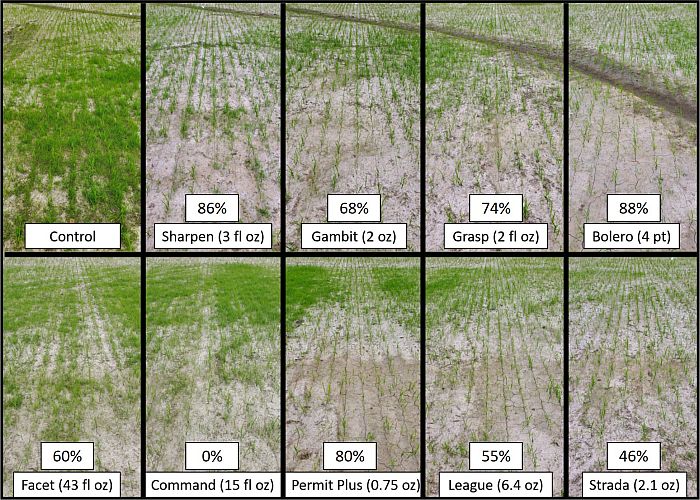
A greenhouse study was conducted in Lonoke, AR to evaluate postemergence (POST) rice herbicide options to control white margin sedge (Figure 7). Sedge plants were sprayed when 6 inches tall. Basagran (2 pt/acre) and Loyant were by far the best options to effectively control white margin sedge (>90% control). If white margin sedge is less than 6 inches tall at the time of application and the density is low, the rate of Loyant can be reduced to 8 fl oz/acre and effective control can still be achieved (90%). If sedges are greater than 6 inches and/or the population is dense, the rate of Loyant should be increased to the 16 fl oz/acre rate. Propanil (4 qt/acre) and Sharpen (1 fl oz/acre) were the next best POST treatments but did not provide adequate control alone (56% and 45%, respectively). However, they may be viable tank-mixture options with Basagran to provide multiple effective modes-of-action and heat up the herbicide solution for greater levels of control if populations are large or dense.
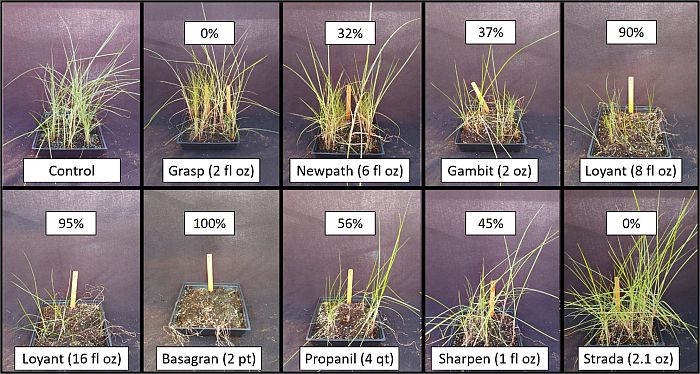
Overall, Roundup or paraquat as a burndown, Bolero or Sharpen as a PRE, and Basagran or Loyant as a POST are the best herbicide options for effectively controlling white margin sedge. RiceBeaux may also be a viable option if densities are low and plants are small as propanil was effective at suppressing emerged plants and the thiobencarb (Bolero) component would add residual to mitigate another flush. As with other weeds, successful management of white margin sedge requires the use of multiple effective herbicide options and applying POST herbicides when plants are small.
Make sure to double-check weed escapes prior to harvest this year and determine whether any sedges may be white margin sedge. Hopefully, these results and recommendations will help to provide a plan for next year to combat this problem weed.
This research was made possible through the support of Rice Checkoff funds allocated by the Rice Research and Promotion Board. More research will be conducted next year to validate these results across years and environments. If you think you may have white margin sedge in your field, please let your county Extension agent or myself know as we are beginning to map its distribution.
Please let me know if I can help, and good luck with the upcoming harvest!
Tommy Butts | Extension Weed Scientist | (501) 804-7314